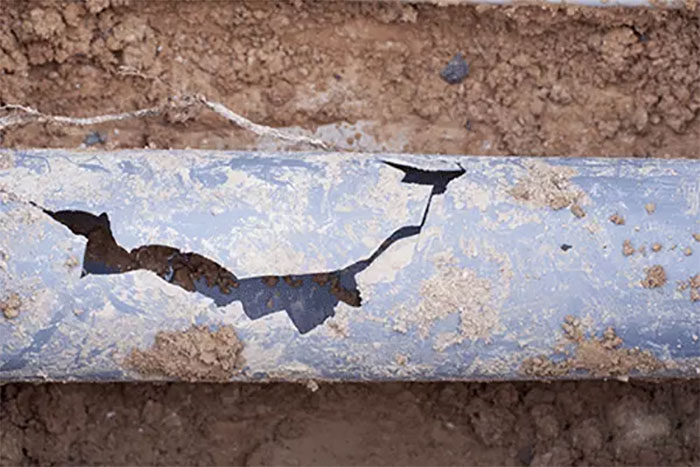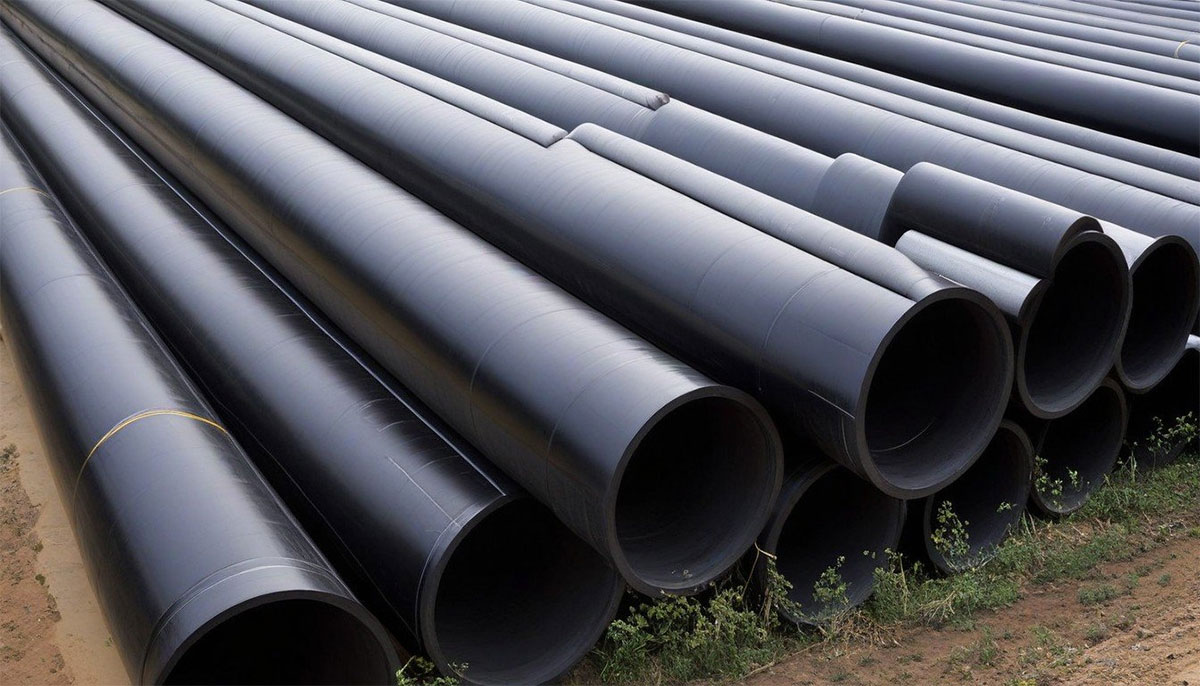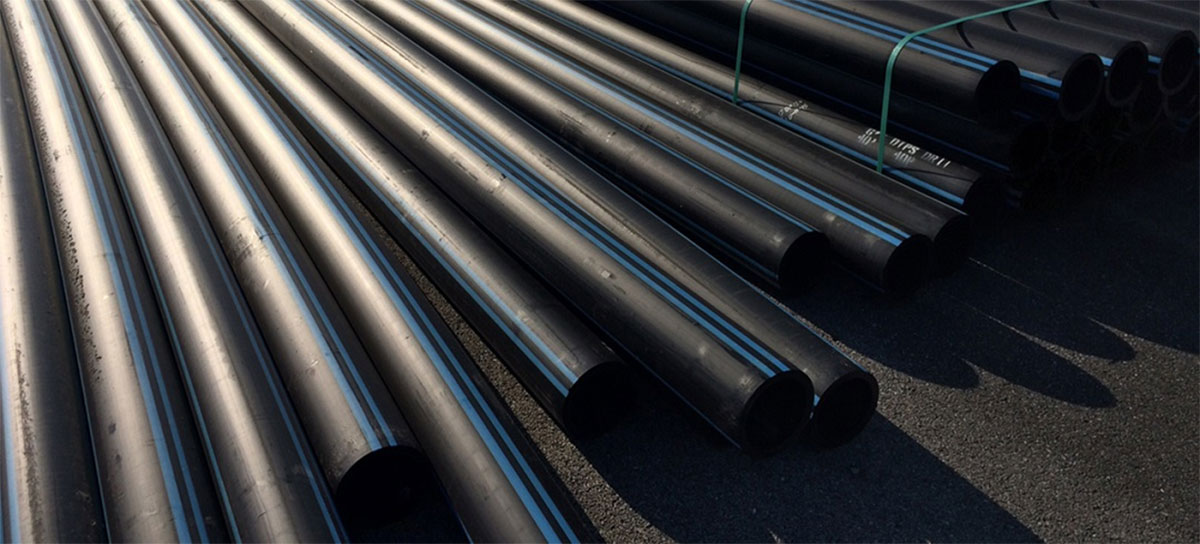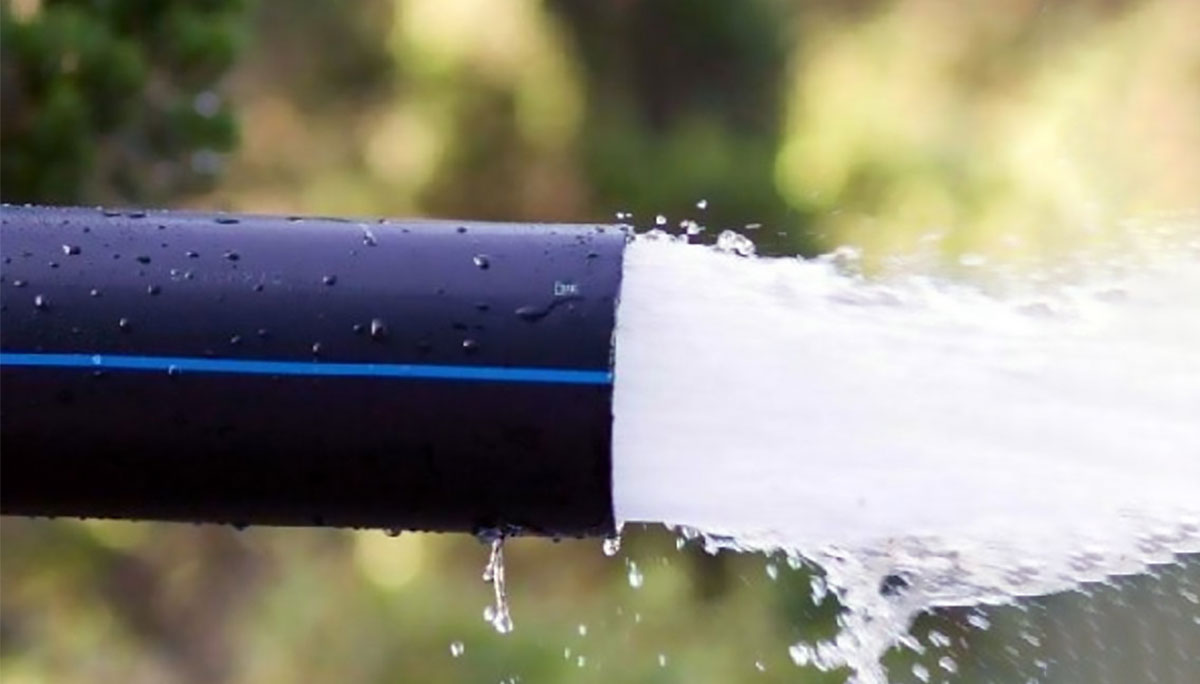The cause and prevention of failure and bursting of polyethylene pipes
One of the common problems in water transfer, water supply and irrigation projects and even gas supply is the failure and bursting of polyethylene pipes, the cause of which depends on various factors. Here We want to address some of these factors and how to prevent them.
The cause and prevention of breaking and bursting of polyethylene pipes can depend on various factors. Below I discuss some of these causes and methods of prevention:
- Impact and mechanical pressure: polyethylene pipes are produced with high resistance to mechanical impact and pressure. However, some factors such as applying excessive pressure, strong impacts, winter coldness, adverse environmental factors and improper use can lead to the failure and bursting of pipes. For prevention, the correct design of the piping system and the use of pipes with the appropriate thickness, the use of appropriate methods for installing and connecting the pipes, and paying attention to the environmental conditions and the needs of the system are necessary.

- Thermal Effects: Temperature changes can affect polyethylene pipes. If the temperature suddenly increases or decreases, the pipes may experience more thermal stresses and dimensional changes, resulting in breakage or bursting. For prevention, temperature changes should be taken into account in the design of the piping system, and it is recommended to protect the pipes against thermal stresses using methods such as using heat-resistant welding and using thermal insulation.
- Contact with contaminated chemicals: Polyethylene pipes generally have high chemical resistance. However, if they come into contact with certain chemicals and contaminants, such as solvents, acids or alkalis, the pipes may be damaged and rupture or burst. For prevention, in choosing chemicals, it is recommended to use pipes with appropriate chemical resistance and comply with relevant standards and guidelines.
- Environmental factors: Polyethylene pipes are resistant to environmental factors such as UV rays, humidity, salt water and sea waves. However, if the pipes are exposed to these factors for a long time, the quality and useful life of the pipes may decrease and as a result, breakage and bursting occur. For prevention, it is recommended to use pipes with a coating resistant to UV rays and protect the pipes from moisture and environmental factors using appropriate methods.
- Correct system design: In piping system design, you need to pay attention to factors such as pressure, temperature, flow and environmental conditions. Using pipes with appropriate thickness based on working pressure, considering temperature changes and thermal stresses, and following industrial standards can help prevent breakage and bursting.
- Correct installation and connection: The installation and connection of pipes should be done correctly.Correct welding of polyethylene pipes is one of the most important factors in preventing failure and bursting in projects. >, also the installation and welding of pipe joints, including welding joints, electrofusion joints, screw joints, etc., should be done using the correct methods and following the manufacturer’s instructions and standards.
- Regular maintenance and inspection: Polyethylene pipes need regular maintenance and inspection. Periodic inspections and early detection of problems can prevent failures and bursts. Also, regular cleaning of pipes and removal of pollution can also increase the useful life of pipes.
- Use of protective materials and coatings: In some cases, the use of polymer layers such as RC can be useful for additional protection of pipes. These coatings can protect pipes from risks such as contact with certain chemicals, rust and temperature changes, scratches, etc.

- Training and Awareness: Installation and implementation operators should be trained on the correct use of polyethylene pipes and compliance with relevant safety and instructions. Being aware of possible risks and following safety recommendations can help prevent failure and explosion.
- Monitoring and surveillance: Installing monitoring and surveillance systems on polyethylene pipes can help identify potential problems and risks early. These systems can include sensors to measure pressure, temperature, flow status, etc. With regular monitoring and supervision, you can track the condition of the pipes and take appropriate measures if necessary.
- Implementation of preventive design: In some cases, preventive design methods can be used to prevent pipes from breaking and bursting. For example, the use of high density of soilAround the pipes, the use of physical supports and protectors at sensitive points and the use of pipe reinforcement technologies can be useful.
- Risk analysis: Before installing polyethylene pipes in the marine environment, a detailed risk analysis should be done. Identifying risk factors and their probability of occurrence, evaluating their impact on pipes and taking appropriate preventive measures can help prevent pipe failure and bursting.
- Experiment and test: Before using polyethylene pipes in the operating environment, necessary tests and tests must be done to check their resistance and performance. Hydrostatic tests, impact tests, bend tests, etc. can be performed to ensure that the pipes meet all industry standards and requirements.
- Cooperation with the manufacturer: If polyethylene pipes are used in the mine, cooperation with the pipe manufacturer can be very useful. They can provide you with detailed instructions on how to install, maintain, and use your pipes, and provide you with specific strategies to prevent breakage and bursting. Wala Polymer Novin Company is one of the best producers of polyethylene pipes and distributors of polyethylene fittings to all customers test report test report of produced pipes and necessary instructions for transportation, storage, installation and commissioning provides
By following these methods and using appropriate solutions, you can prevent the failure and bursting of polyethylene pipes in your piping system and increase the useful life of the pipes.
In any case, to prevent polyethylene pipes from breaking and bursting, it is recommended to always follow the relevant industrial standards and instructions and according to the needs and environmental conditions, use the pipes Select and install. Also, regular maintenance and cleaning of pipes and periodic inspections are also helpful in order to identify and fix possible problems.




